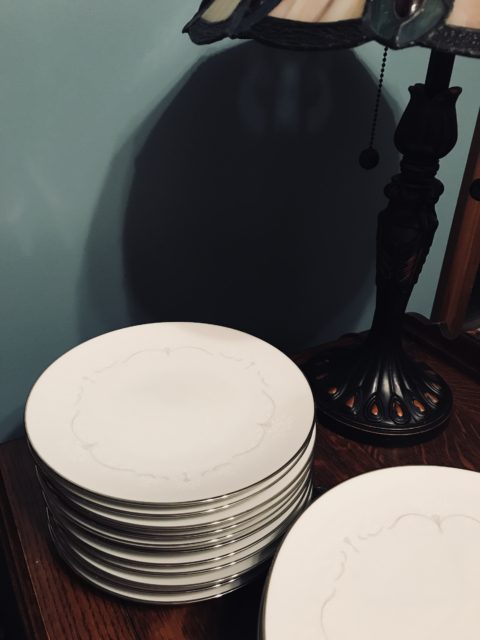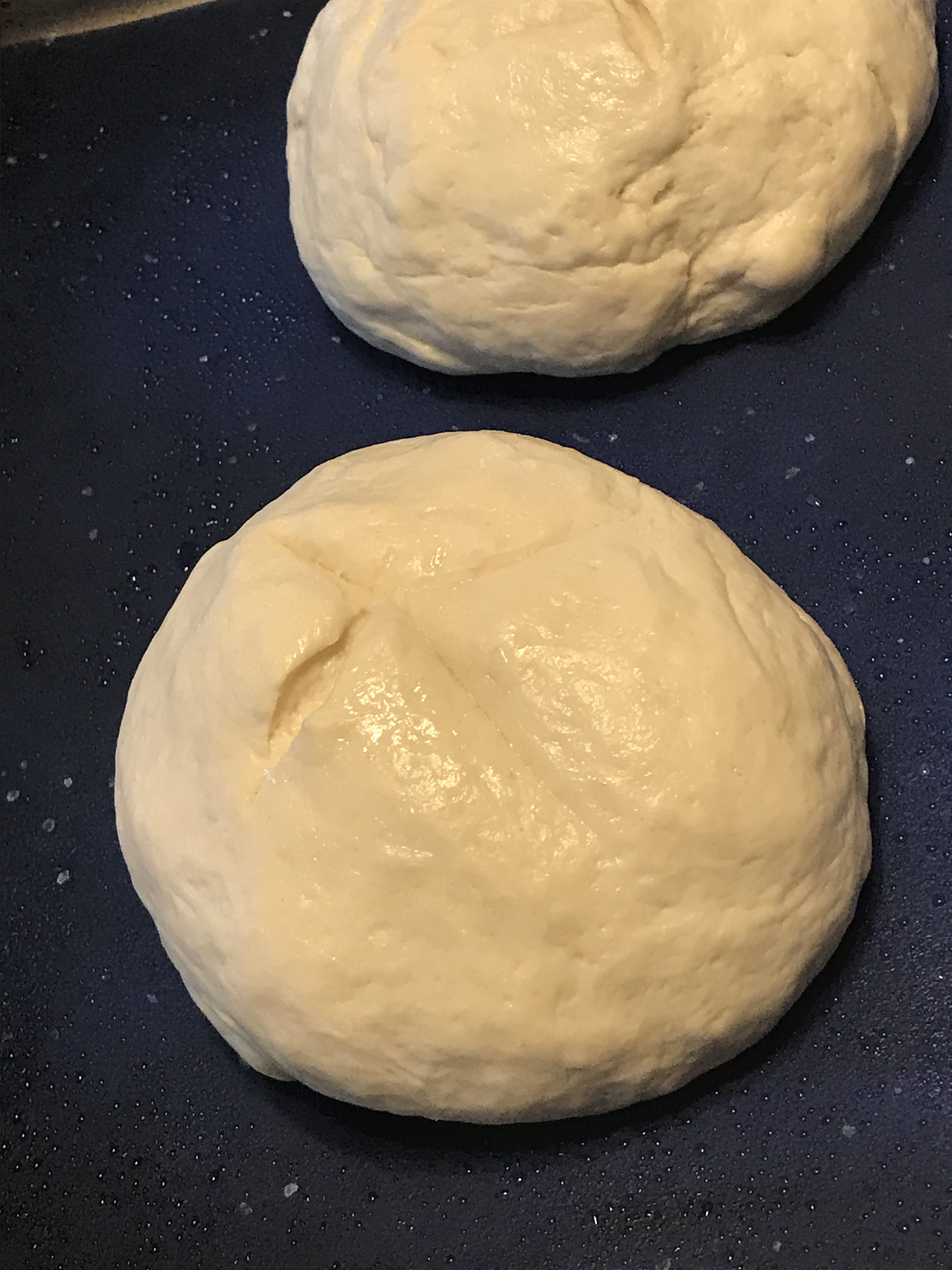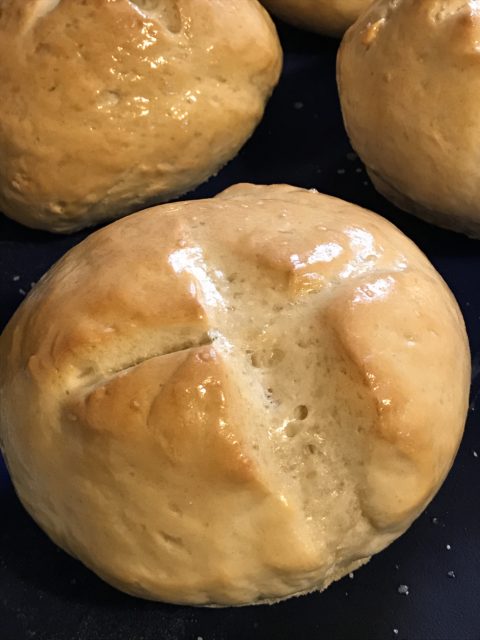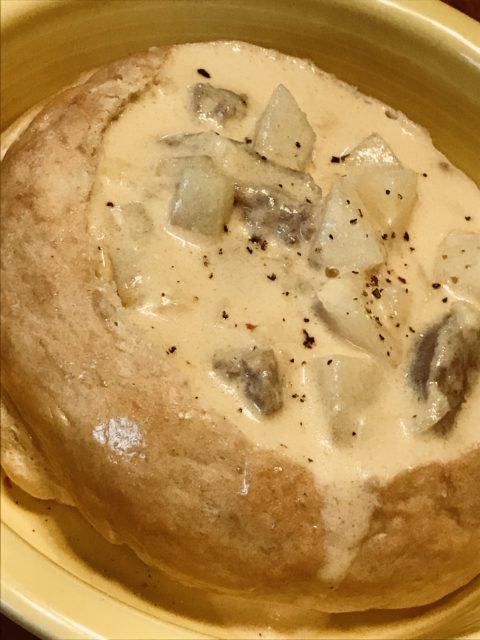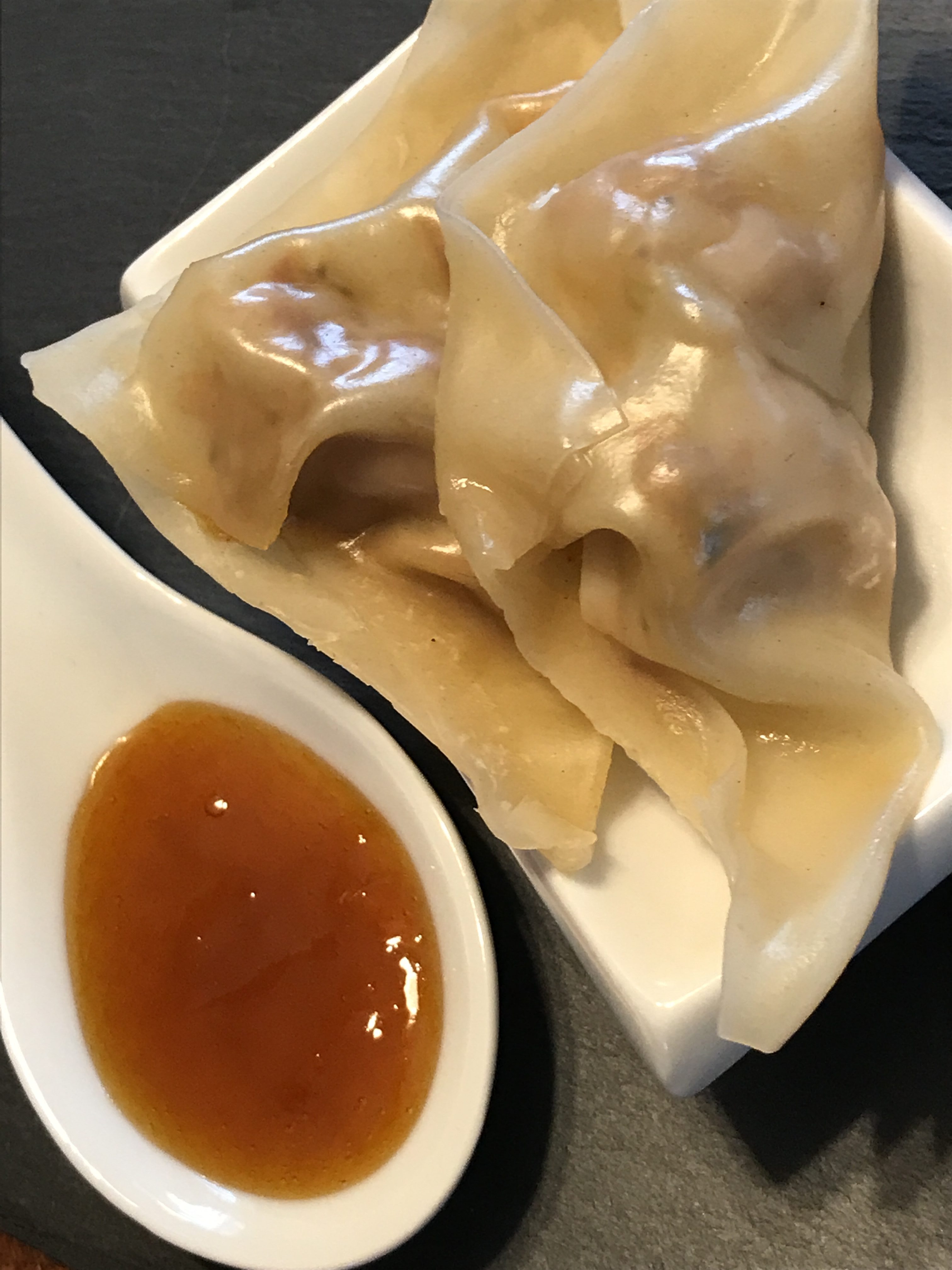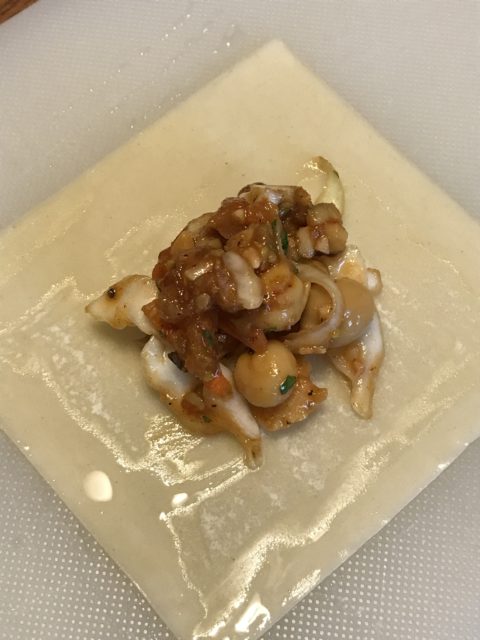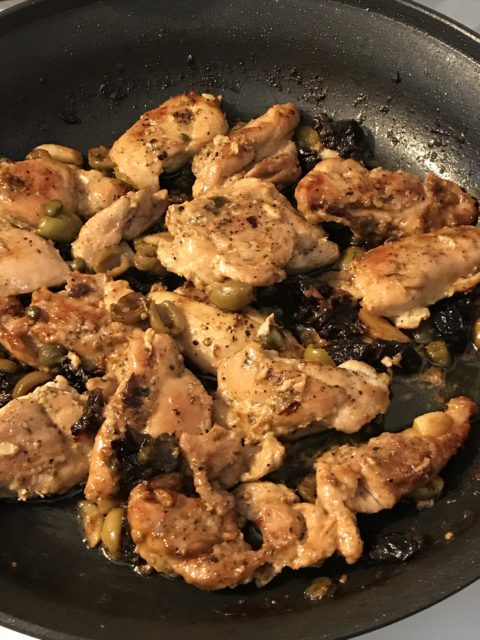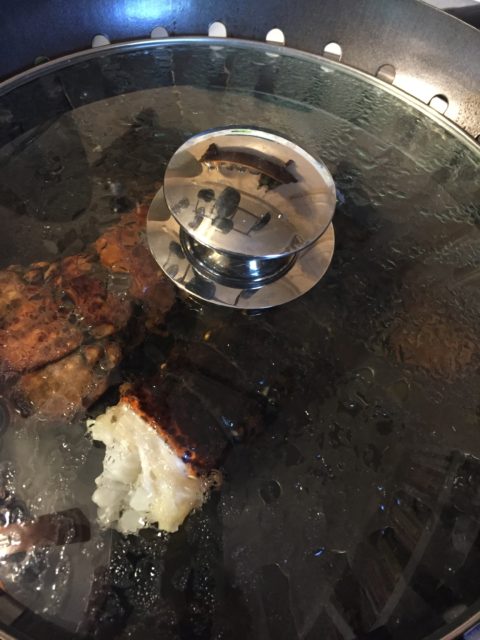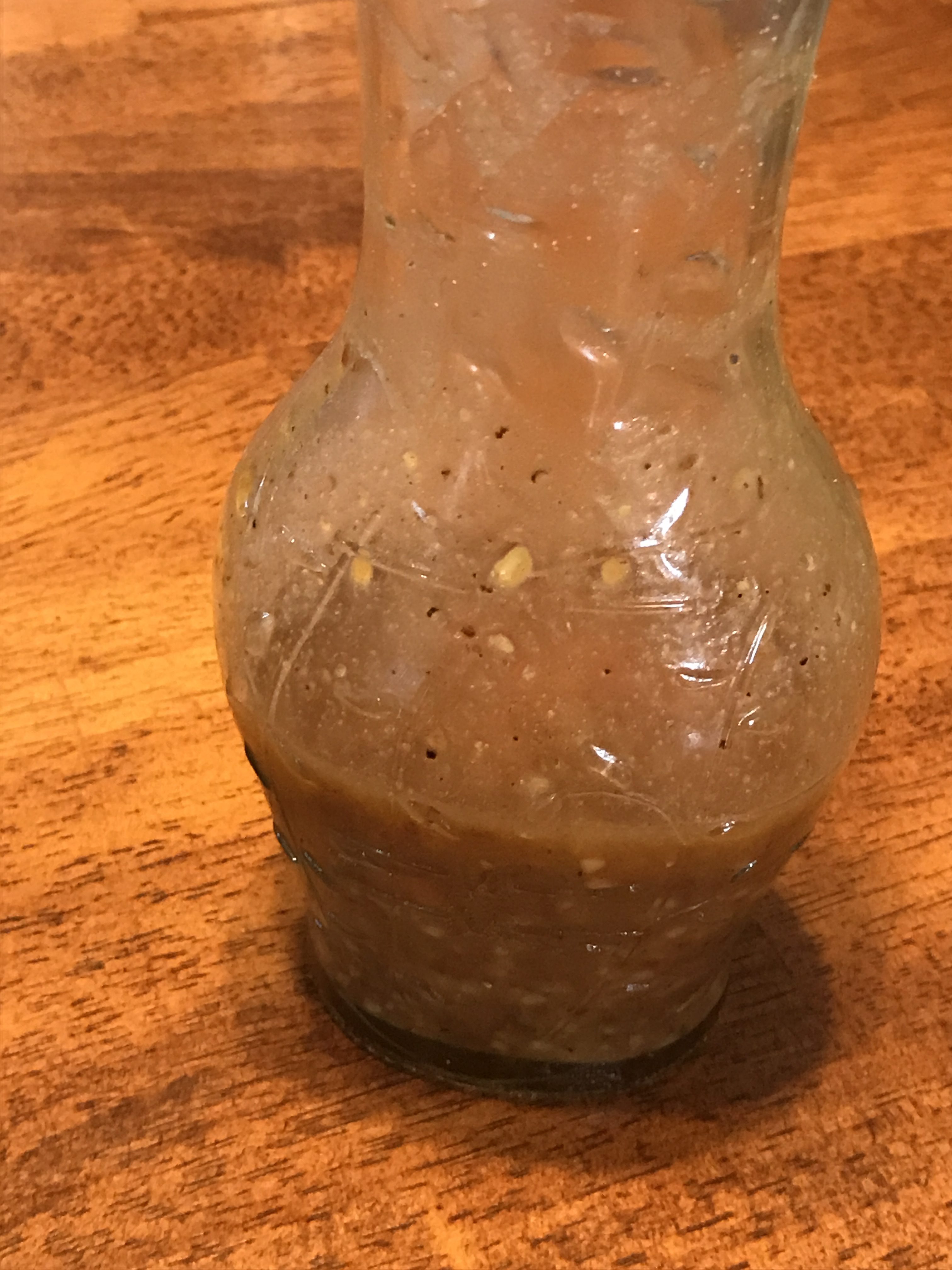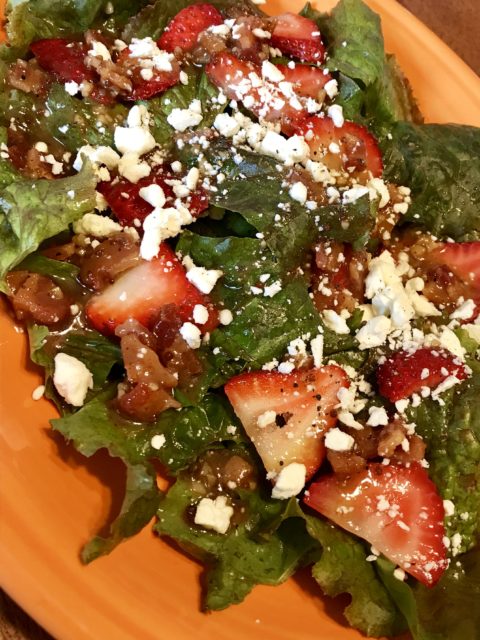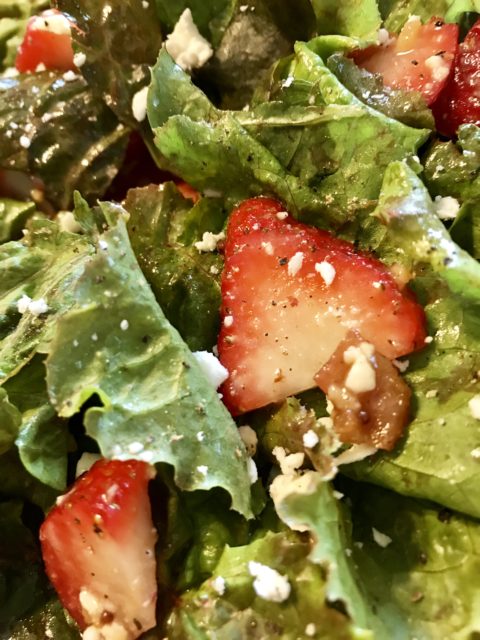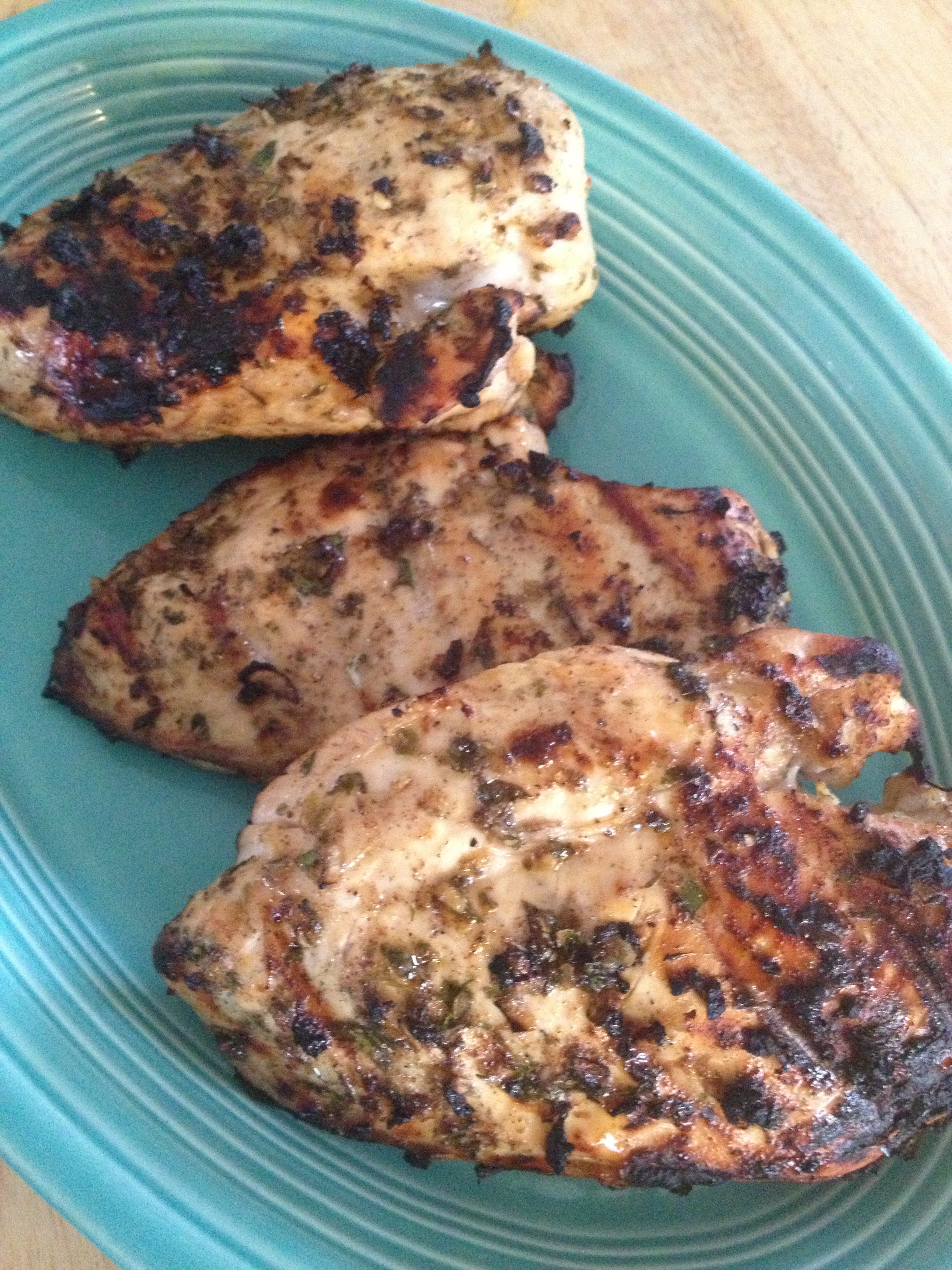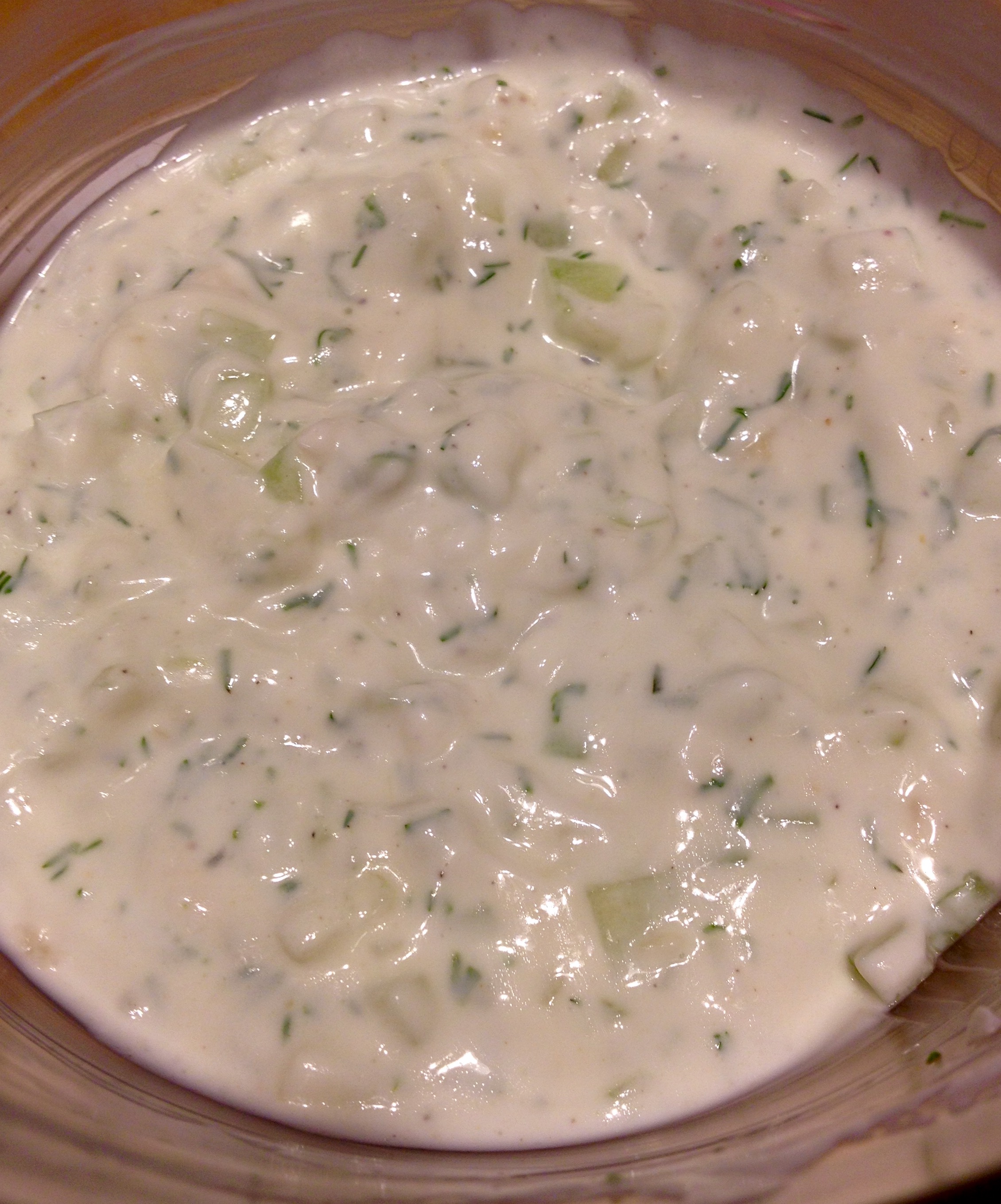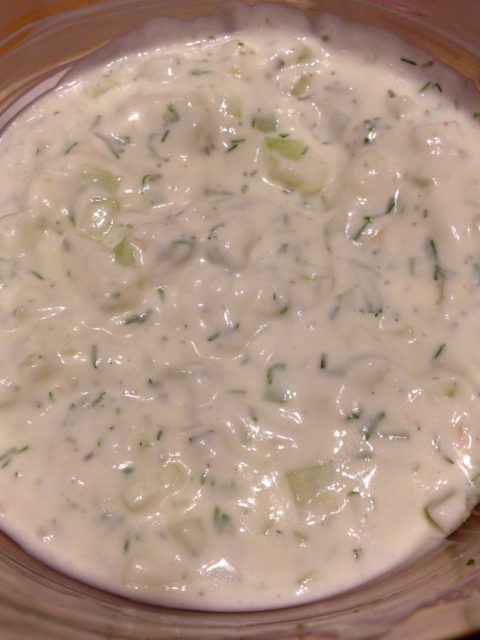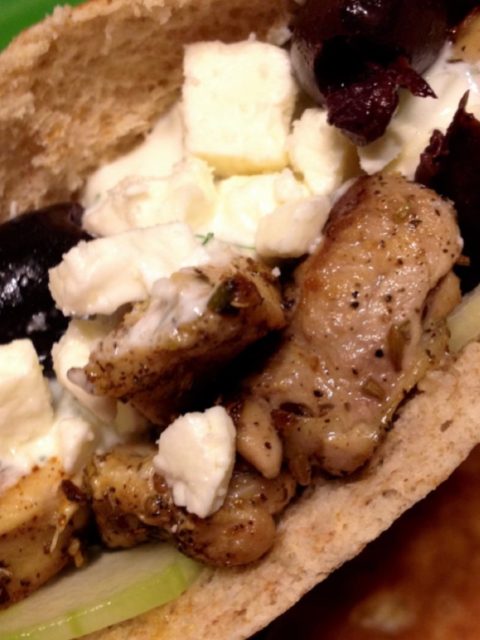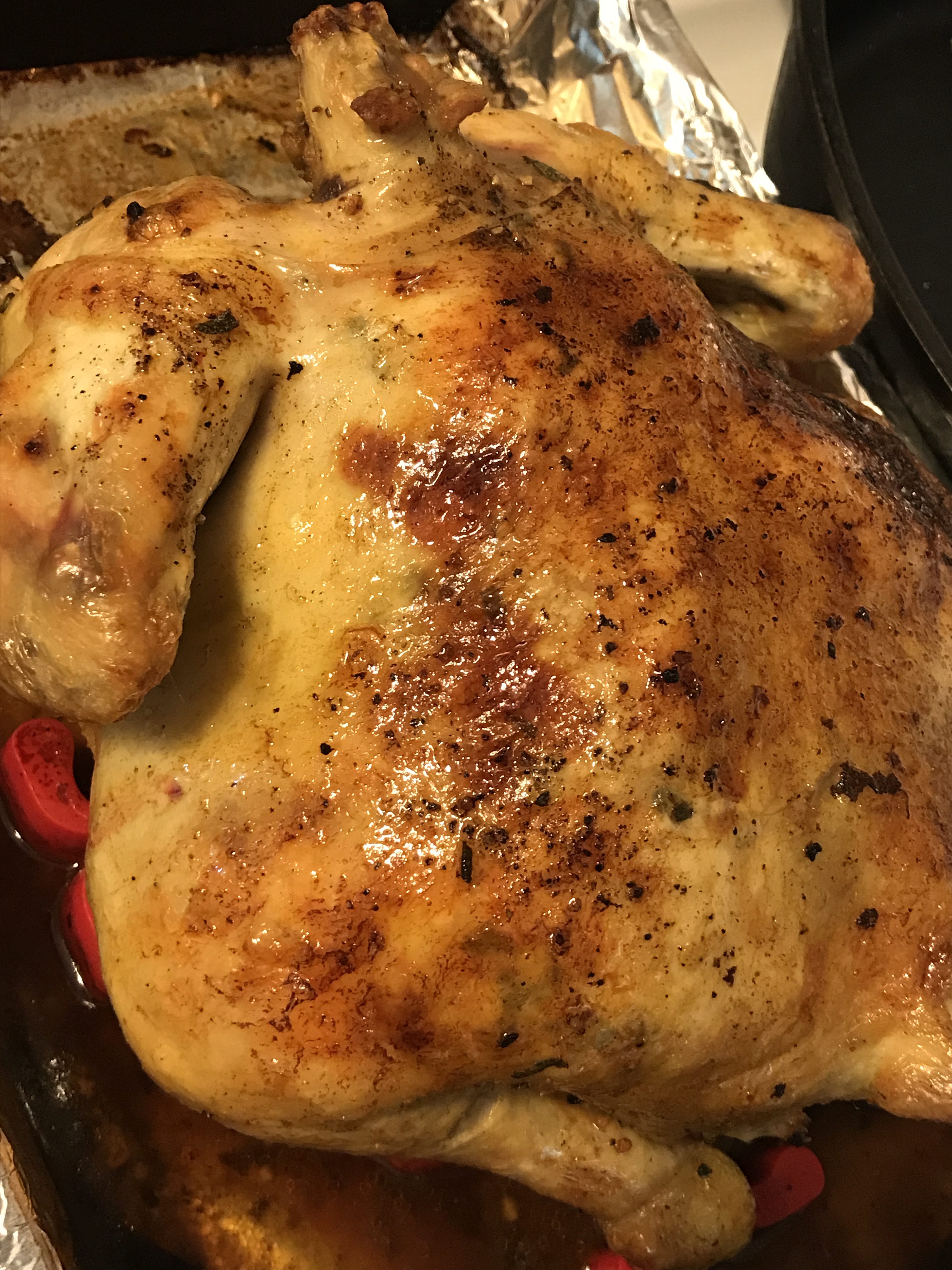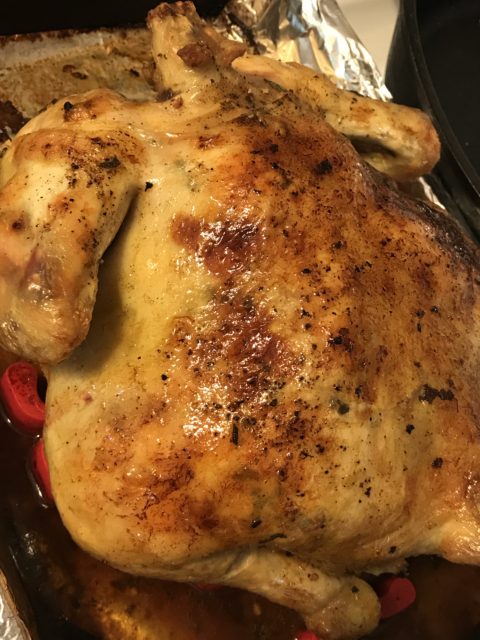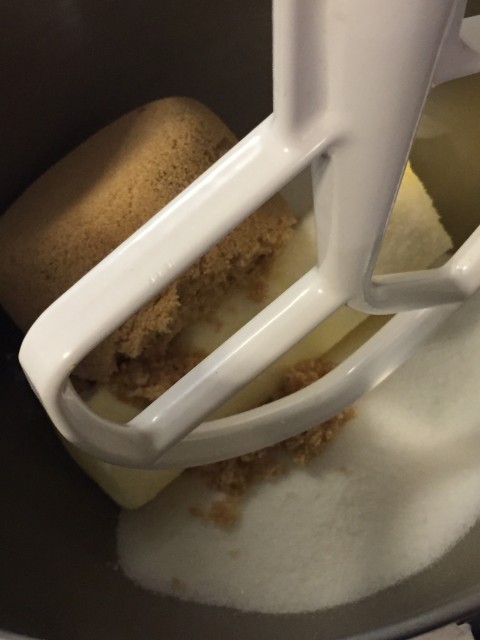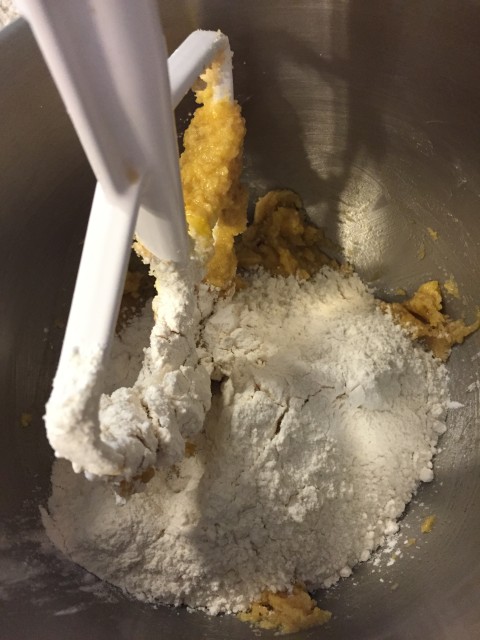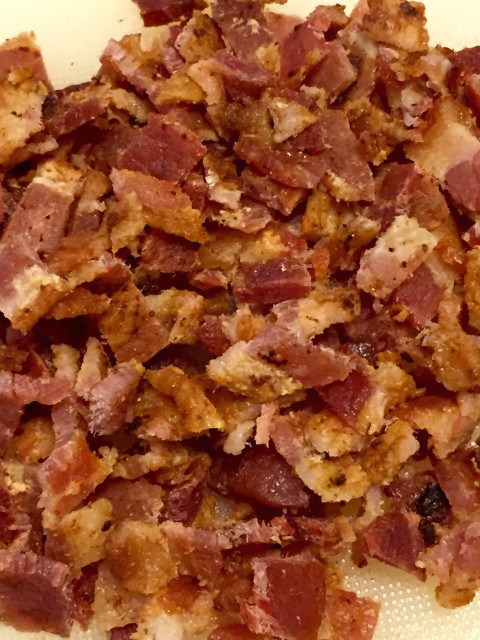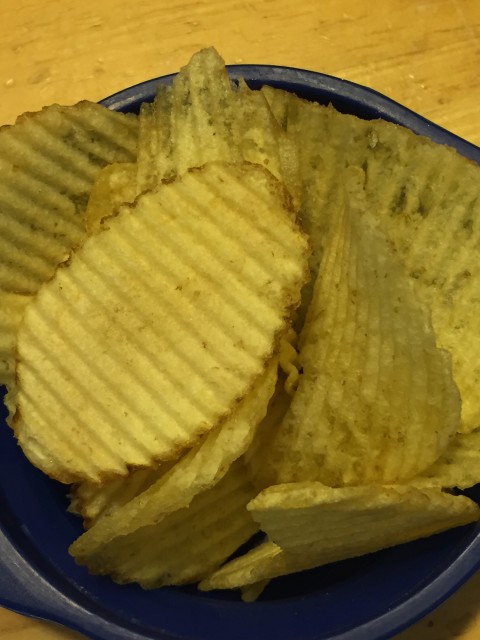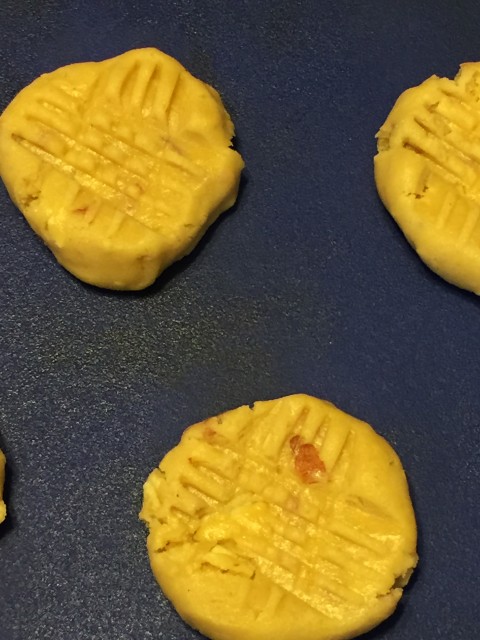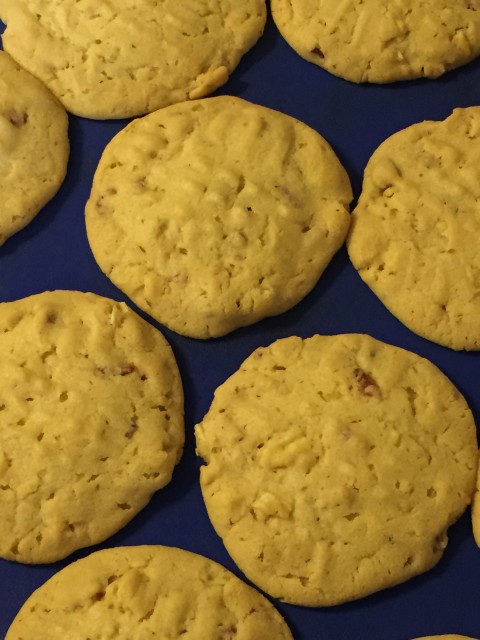
Everything has beauty, but not everyone sees it. – Andy Warhol
I was supposed to be working on a post about the incredibly tasty Beer Cheese Brat Potato Soup I made the other day. However, I am currently visiting my mother’s house for Thanksgiving and managed to leave the scrap piece of paper containing my recipe scribbles at home. I might be able to remember it, but in the meantime, something else came to mind.
As I was designing a holiday post for Changing Seasonings Facebook page, I found the graphic above. It reminded me of the amazing Montana vacation I recently returned from. The owner of the cabin where we stayed had a drawer full of real silverware that was meant for everyday use. They were mismatched from many different sets and a bit tarnished. I didn’t ask her, but I imagine she just picks up pieces from various shops full of unique items when she’s traveling. The second thing I thought to myself after discovering them (the first being, “how beautiful!”), was “why in the world do I keep my silverware in a box, in a china cabinet, that rarely gets used??”
When I was young, the china and silver was brought out on special occasions, typically Easter, Thanksgiving, and Christmas. The table artfully set to the specifications of Miss Manners or whoever the etiquette writer of the time was. The place settings were beautiful. It was still a time when couples chose a china pattern when planning their wedding, or received their great grandparents set as a gift and relished it. And, then they tucked it in a china cabinet, maybe displaying a few pieces, and brought it out for special occasions. I have a set that was handed down to me. As I sit here typing this, I can’t even recall whose it was and what the pattern looks like (though I think it’s blue).
As for our more recent holiday meals, my family has opted for less time washing dishes and more time playing games. That means dishes have been machine washable or even, paper (gasp!). Funny thing is, as I was typing this post, my mother announced that since there were less of us here this Thanksgiving she was getting out the nice stuff. I giggled inwardly because she had no idea I was working on this.
Anyway, our cabin owner’s regular use of something that historically has been thought of as “special” made me wonder, “isn’t everyday special?” Life moves so incredibly fast. Our children grow up quickly, and time with older relatives never seems long enough. Waiting to use items until the occasion implies worthiness, devalues all of the things that are part of our everyday lives.
My plan is to pull out the box of silver I have and use it. I am going to watch for quirky, beautiful and unique pieces in shops that I wander through, buy them, and, you guessed it, use them. I am going to dig out some of the beautiful china pieces I have and put them to use, even if it is just a creamer or a serving dish now and then. I want my own children to be excited to have family dinnerware and silver passed down to them, and that won’t happen if they don’t have happy memories of using them.
I often tell people I am a cook, not a baker. I think the biggest reason is that baking requires more precise use of ingredients; measuring, proofing, rising, etc. and I am a “toss a little of this and a little of that in” kind of girl. I am not very patient either. Waiting for something to chill or rise makes me stir crazy. It’s not that I don’t like all things baked, I do. I just would be happy if someone else did the preparation. This is my predicament. I love the smell of fresh baked breads. I love eating cookies when they are still g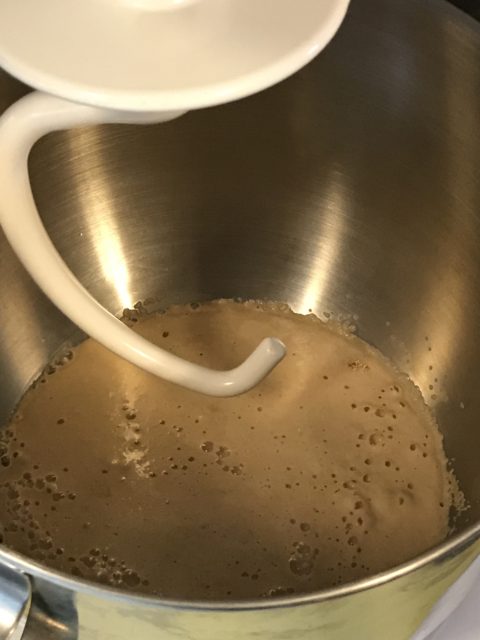 ooey, and bread when the butter melts and drips down my hand. And, I love steamy pies with a scoop of icy cold ice cream melting beside. So, sometimes I bake.
ooey, and bread when the butter melts and drips down my hand. And, I love steamy pies with a scoop of icy cold ice cream melting beside. So, sometimes I bake.
In addition to patience and precision, baking takes skill. Now, I think I have the skills needed, and I certainly know where to go if I feel I’m lacking knowledge. Other than the ever-ready brilliance of Siri and Alexa (what would we do without our phones and Echo type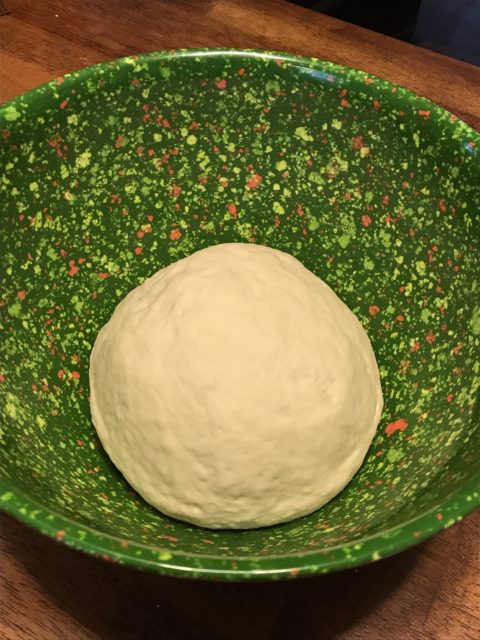 devices?), I can always call my mother. See, baking, in our family, seemed to skip generations. My great grandmother baked, my mother bakes, and my own daughter bakes. Me, not so much.
devices?), I can always call my mother. See, baking, in our family, seemed to skip generations. My great grandmother baked, my mother bakes, and my own daughter bakes. Me, not so much.
How happy I was to find an easy recipe for making one of my favorite breads: the bread bowl. As soup season is upon us here in the mid-west, for many soup recipes, the bread bowl is a considerably better vessel for serv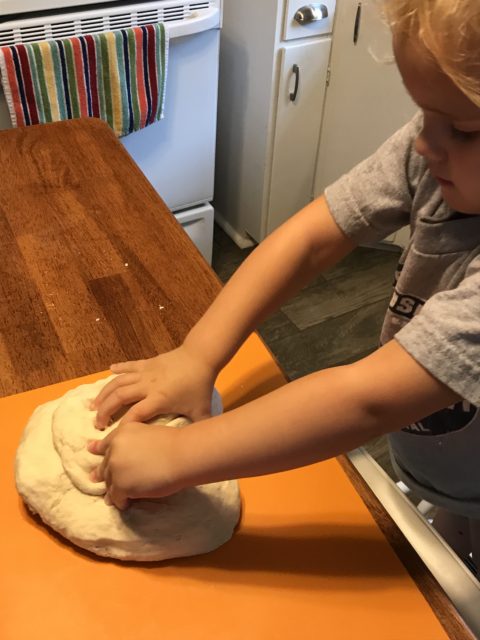 ing than any dish in the cupboard. Where I live, typical bakeries are those in the grocery and big box store. Occasionally, a vendor at the Farmers Market has baked goods, but that is hit and miss. It was time I learned to make them myself. This recipe was so easy, my 3 year old granddaughter, Adilyn, helped the first time.
ing than any dish in the cupboard. Where I live, typical bakeries are those in the grocery and big box store. Occasionally, a vendor at the Farmers Market has baked goods, but that is hit and miss. It was time I learned to make them myself. This recipe was so easy, my 3 year old granddaughter, Adilyn, helped the first time.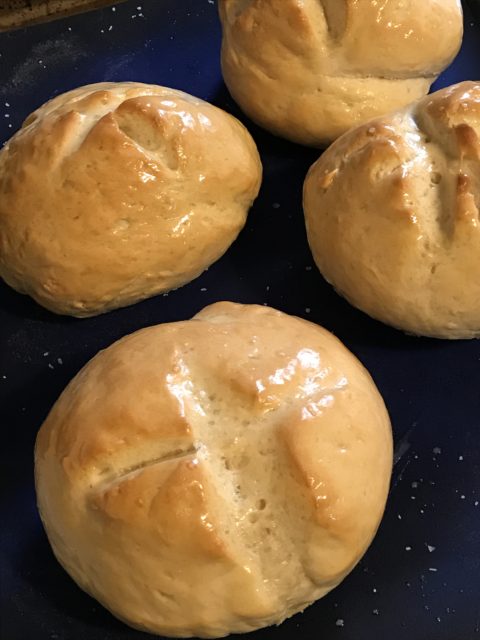
The bowls turned out great. Even though they weren’t exactly uniform in shape, the not too dense yet chewy texture and yeasty flavor were perfect. After they cooled, I stored them in a plastic bag in the refrigerator for several days. When I was ready to use them, I baked them at 350 degrees directly on the rack for about ten minutes until warmed through and the crusts were crunchy again.
The recipe isn’t mine. Credit belongs to The Baker Upstairs. A few tips though: I let the yeast proof a full ten minutes before adding the dry ingredients. I used a mixture of bread flour and all-purpose flour. Not for any particular reason other than when I first made the recipe, I didn’t have 3 1/2 cups of bread flour. But, it worked, so I continued with the half bread flour, half all-purpose flour. I kneaded the bread for nearly ten minutes the first time because I had a little person helping. It only took about 5-6 minutes to get the dough smooth the next time. I use a silicone baking mat on my baking sheets. Foods brown perfectly and don’t stick to the pan.
- 1½ cups warm water
- 2 tablespoons instant yeast
- 1 tablespoon sugar
- 3½ cups bread flour (or all-purpose flour, I used a mixture)
- 2 teaspoons salt
- Spray bottle with warm water
- In a large bowl or the bowl of a stand mixer, dissolve the yeast and sugar in the warm water. Let sit 10 minutes, or until bubbly and foamy.
- Add 3 cups of flour and the salt, and mix well.
- Add remaining flour, ¼ cup at a time, until the dough pulls away from the sides of the bowl and is only slightly sticky to the touch.
- Knead until smooth, 5-10 minutes.
- Place the dough in a lightly greased bowl, cover with a warm, damp towel, and let rise 30 minutes.
- After 30 minutes, preheat the oven to 500.
- Punch the dough down and divide into 4 equal sized pieces.
- Shape each piece into a ball and place on a lightly greased baking sheet.
- Score the top of each piece and sprinkle with salt.
- Spray with warm water and let rise 15 minutes.
- Bake in preheated oven for 2 minutes, then spray again with water and reduce the heat to 425. Bake 16-18 more minutes, or until golden brown.
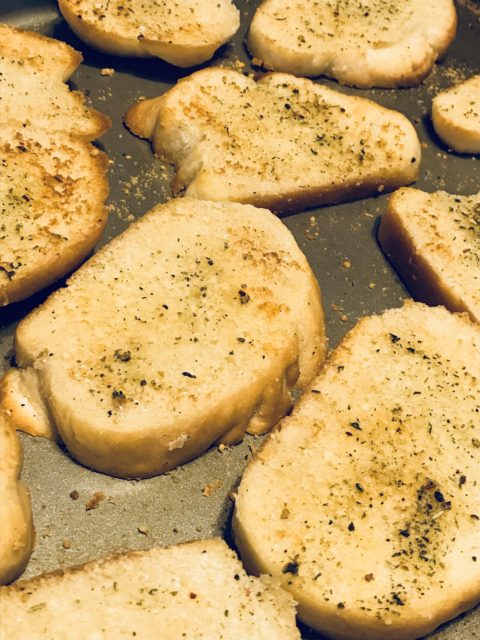
Other than being great bread bowls, this simple recipe just makes good bread. I didn’t need all of the bowls I made the other day so, one loaf was just eaten warm with butter. The other loaf was sliced and became garlic bread for a pasta meal. After buttering the slices and topping with grated parmesan, I sprinkled on Changing Seasonings Bread Dippin’ blend then baked. Tasty!
Chopped: ECA Edition, big fun!
The organization that I work for had a fun team building activity a couple of weeks ago that was right up my alley. Right up my alley, that made me snicker. Where did that phrase come from anyway? You know I am going to find out. And, apparently, the origin of the phrase goes back as early as the 1600’s, with the word “alley” referring to something being part of one’s province. The exact phrase is also documented in a 1931 court case. In the 1930’s the slang term “up one’s street” was commonly used in the same reference. Okay, I digress, but now we know.
Our team building committee came up with their own version of the popular Food Network show, Chopped. The rules were slightly different. Employees received an envelope of six unique “mystery ingredients.” There were several different lists. The challenge was to come up with a dish using at least three of the ingredients for a staff carry-in. Dishes were judged and awarded very interesting prizes in four categories: Most Creative Use of the Ingredients, Presentation, Taste (featuring at least 3 ingredients), and Most Ingredients Used with Best Taste. We weren’t timed and didn’t have to cook onsite, thankfully. However, it was just a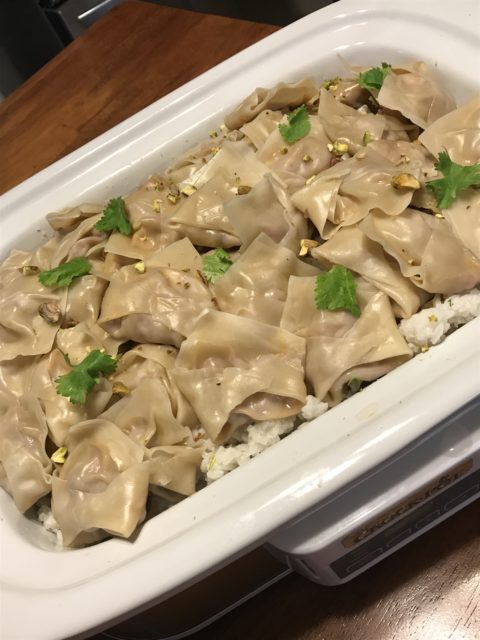 s challenging coming up with something that could be easily transported and re-heated. I am amazed we didn’t blow a fuse with all of the crockpots that were plugged in at the office that day!
s challenging coming up with something that could be easily transported and re-heated. I am amazed we didn’t blow a fuse with all of the crockpots that were plugged in at the office that day!
I was challenged to produce something fairly creative and tasty, first, because many of my co-workers know I own a food business so I figured they would have high expectations, and second, because I am just highly competitive. 🙂 I had a strategy. I did what I thought others would do, and searched the world wide web for recipes that used many of the ingredients on the list. The list I was given screamed “dessert” to me, and sure enough those were the type of recipes that popped up. My list included Apricot Preserves, Star Fruit, Coconut Milk, Wonton Wrappers, Pistachios, and Nutella. See, sounds like dessert.
So, I went another direction. Several of my ingredients are used in Moroccan cooking, which I love, and pair well with my Ras el Hanout blend. Ras el Hanout is a blend of “top shelf” spices including Coriander, Ginger, Cumin, Black Peppercorn, Turmeric, Cinnamon, Orris Root, Cardamom, Rose Petal, Fennel Seed, and Star Anise. The spices for this blend are first toasted to release the oils, then put through the grinder. They smell unique but amazing. I came up with the dumpling recipe by writing a variation of an Asian wonton or dumpling. Several of my co-workers are vegetarian so I decided to make the dumplings without meat. I could have used tofu, but I had chickpeas in the pantry, and use them in other Moroccan dishes, so chickpeas became the protein in the dumplings. Since Star Fruit isn’t readily available in my rural grocery, I decided to use it similar to dried apricots, and ordered the dried version from Amazon.
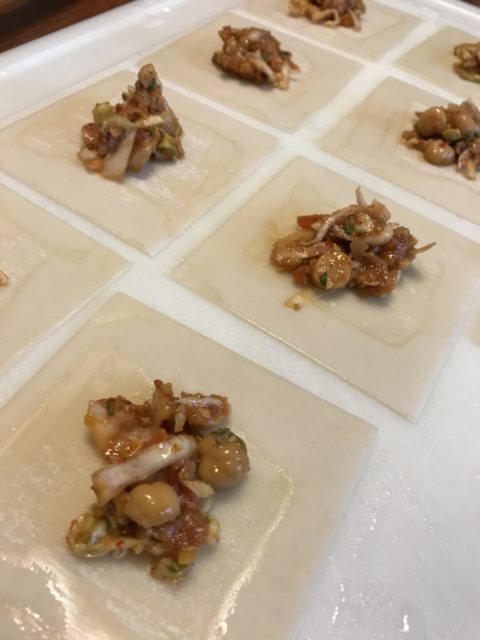 Now, let me just mention. Making dumplings takes skill. Skill that I apparently don’t have. It takes practice, lots of it! Folding them is time consuming. After you get the hang of it, the process goes a bit faster. But, plan on throwing a couple in the trash, and being okay if they aren’t even close to uniform. For the sake of space in the steamer and in the crockpot, I gave my dumplings an extra fold. I also folded and then steamed a
Now, let me just mention. Making dumplings takes skill. Skill that I apparently don’t have. It takes practice, lots of it! Folding them is time consuming. After you get the hang of it, the process goes a bit faster. But, plan on throwing a couple in the trash, and being okay if they aren’t even close to uniform. For the sake of space in the steamer and in the crockpot, I gave my dumplings an extra fold. I also folded and then steamed a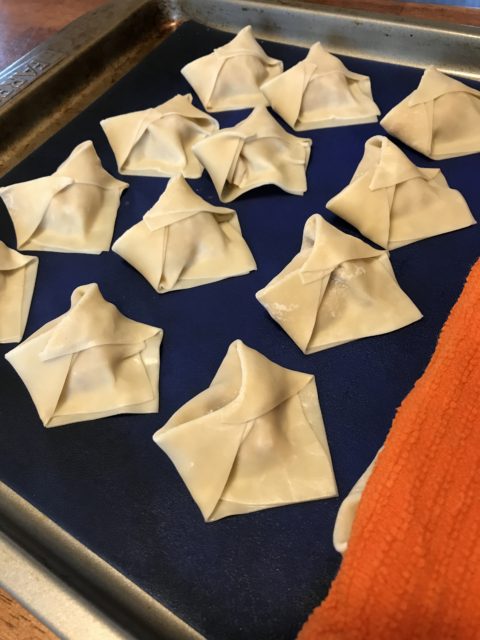 few dumplings to sample before attempting origami with the fragile little squares.
few dumplings to sample before attempting origami with the fragile little squares.
I know you all are w ondering. Yes, this tasty dish was the winner of not just one, but two of the categories. I was awarded a trophy for Most Creative Use of Ingredients, and a tiny garbage can full of candy for Most Ingredients with Best Taste. Kudos to the team building committee for their creative prizes! (Really guys, cash would have been just fine, haha!)
ondering. Yes, this tasty dish was the winner of not just one, but two of the categories. I was awarded a trophy for Most Creative Use of Ingredients, and a tiny garbage can full of candy for Most Ingredients with Best Taste. Kudos to the team building committee for their creative prizes! (Really guys, cash would have been just fine, haha!)
The dumplings would make a great appetizer. The rice can be served as a side dish to an entree such as Tangine Chicken Thighs. Or, you can serve the dumplings with the rice, as I did.
I would certainly suggest eating right away though both the rice and the dumplings did heat well in the crockpot. Another suggestion, prepare dumplings with children. Then you can put them to work on the tedious stuffing and folding. Win, win! They get a cooking lesson, and you don’t have to fold. Enjoy!
- For Dumplings:
- 1 15oz can Chick Peas (can substitute ½lb firm Tofu or ground pork or turkey)
- 1 ½ C Slaw Mix (or chopped cabbage and carrots)
- 2T Scallions
- 2t grated fresh ginger
- 1T Harissa
- 2T chopped Pistachios
- 2T chopped dried Star Fruit
- 1T fresh Cilantro
- 1t (1clove) minced fresh Garlic
- 1T Soy Sauce
- 2t Sesame Oil
- 1 Egg
- 1t Kosher Salt
- ¼t ground Pepper
- ½t Ras el Hanout seasonings
- 35-40 Wonton Wrappers
- For Dipping Sauce:
- 1 12oz jar Apricot Preserves
- 1T Soy Sauce
- ¼ C Rice Vinegar
- For Rice:
- 1 C Jasmine Rice uncooked
- 2 ½ C Coconut Milk (can add water to make full amount)
- ½ t grated fresh Nutmeg
- ½ t grated fresh Ginger
- 1T chopped fresh Cilantro
- Juice of ½ fresh Lime
- Mix dumpling ingredients except wrappers.
- Use 1t filling for each wonton.
- Wet and seal edges.
- Steam for 10-12 minutes.
- Whisk together the sauce ingredients. Reserve for dumpling dipping.
- Cook rice to package instructions.
- Add nutmeg and ginger while cooking.
- Add lime juice and cilantro before serving.
- Garnish with chopped pistachios.
I made a variation of Chicken Marbella for dinner the other night. Like many new recipes I try, I wanted to do a little research about the origin of the dish. The first recipe I found described the dish as an Italian-American preparation. The next several recipes, said the dish was French, hmmm. Puzzled, I looked further, and discovered that Marbella is a city on the Mediterranean coast of Spain (a beautiful place that I have actually traveled, though I was a bit to the east). The ingredients including olives, capers, garlic and prunes, seem to fit with the dish being more Spanish. Further research led me to Slow Burning Passion where I uncovered the story of Sheila Lukins, the Jewish New Yorker who is credited for developing the recipe. I was happy to read that Ms. Lukins did travel the Mediterranean, and was inspired by Spanish and North African cuisine. So, though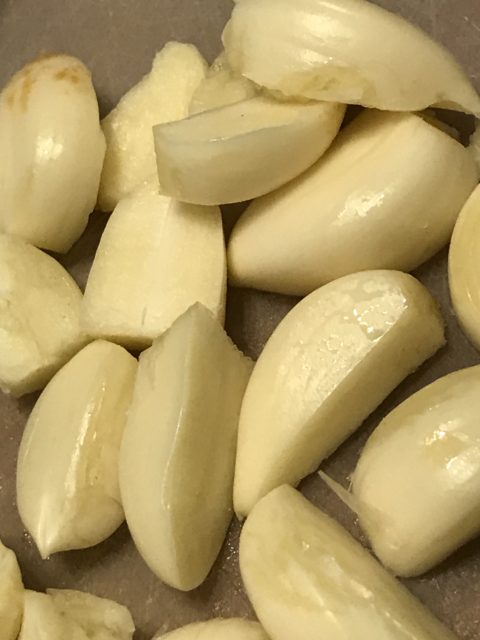 it was born in New York, I still think of this as a Mediterranean dish.
it was born in New York, I still think of this as a Mediterranean dish.
I love to combine sweet and savory, and use fruit in many dishes. And, though people tend to think of prunes in a more, umm, functional manner, I love them. Really, there is nothing in this recipe that I don’t adore: garlic, olives, chicken thighs…yum! I, perhaps, use a tad bit more garlic than the traditional Chicken Marbella recipes call for because, well, it’s garlic!
I have seen this dish prepared two ways. One roasts the chicken thigh pieces in the oven while making the sauce on the stove top, and then adds the thighs to the sauce. The other, the one that I used, browns the thighs in a pan on the stove, sets them aside, makes the sauce using the drippings in the pan, and then returns the thighs to the pan, and finishes the dish in the oven.
in the oven while making the sauce on the stove top, and then adds the thighs to the sauce. The other, the one that I used, browns the thighs in a pan on the stove, sets them aside, makes the sauce using the drippings in the pan, and then returns the thighs to the pan, and finishes the dish in the oven. 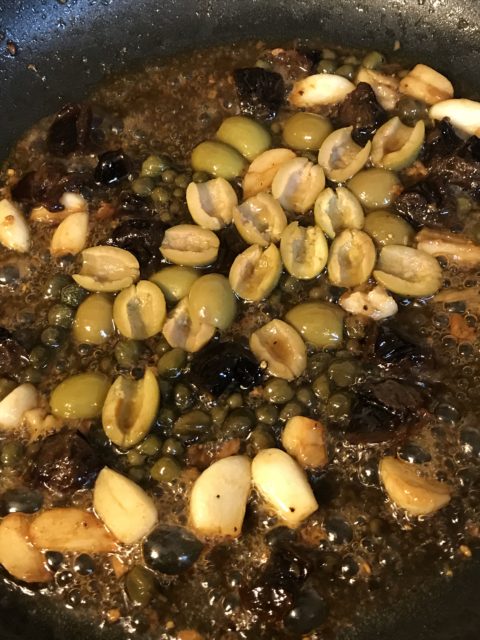
After trying this dish, I am certain there will be more of it in my future. It was so tasty that I ate the leftovers for breakfast the following day. I reheated it (though I may have eaten a couple cloves of garlic and an olive or two, cold, right out of the container).
- 1½ lbs Boneless Skinless Chicken Thighs
- 1 small head of Garlic (about 6 cloves, cut each clove in half)
- 4 pitted Prunes (cut in pieces and rehydrated in ⅓ C warm water)
- 1 T Capers
- 8-10 Green Olives (pitted, without pimentos and sliced in half)
- 1 T Brown Sugar
- 2 T Butter
- 1½ T Sherry Vinegar
- 1-2 sprigs fresh Oregano
- Olive oil
- Preheat the oven to 465 degrees.
- Heat olive oil over medium high heat in a skillet that can go in the oven.
- Brown both sides of the chicken thighs, then remove and set aside.
- In the same skillet with the chicken renderings, add a little more olive oil.
- Toss in the garlic a stir while it cooks for 1-2 minutes.
- Add the prunes with their water, capers, olives, brown sugar, and vinegar.
- Stir and let reduce about 2 more minutes.
- Add butter to finish sauce.
- Add the chicken back in.
- Top with the sprigs of oregano.
- Put in the oven and cook 12-14 minutes.
- Remove the oregano stems before serving.
Lobster Facts: Lobsters can grow up to four feet long and weigh as much as 40 pounds.
It is believed that lobsters can live as long as 100 years.
And, lobsters do not mate for life (this one bummed me!).
National Lobster Day was in June (15th). I promised to share a post on how easy it is to grill lobster. I decided to share a simple steaming method too because National Macaroni and Cheese Day (July 14) is today, and Lobster Mac & Cheese is simply amazing! Use my Grown-up Mac & Cheese recipe substituting lobster tail chunks for the bacon and seasoning with Changing Seasonings Calypso Blend or for an extra bite, Spicy Shrimp Blend.
Lobster is soooo much better (& cheaper!) when you do it yourself. Tails are a great beginner lobster dish. Unless you are doing surf & turf and lobster isn’t the main attraction, plan on two tails per person. I recently purchased beautiful tails, about 4-6 oz each, for $3.99 a tail on sale. I went out to dinner soon after and the restaurant wanted $36 for a two 6 oz tail dinner. Crazy! Steamed or grilled they are quick and easy to prepare.
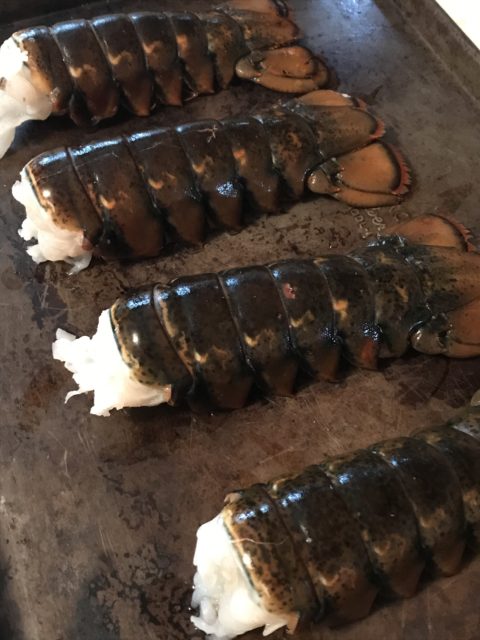 So let’s talk basic lobster first. Buying and cooking fresh whole lobster is a post of it’s own. I prefer tails for several reasons including price, ease of storage, and ease of preparation. They provide the perfect amount of the tender buttery meat needed with less work. The tails are arguably the best part of the lobster. Lobster are typically categorized by where they grow, cold water (like Maine) or warm water (like Florida or the Caribbean). It is rumored that the lobsters from cold water are the best texture and flavor. You can ask the grocer where the tails are from. If they aren’t marked, they are probably warm water. Cold water lobster are sometimes a bit more expensive, but worth the extra cost. Honestly, here in the Midwest, I get excited to find good lobster on sale regardless of where it came from. Use your eyes and nose when choosing tails. Though shells vary, you can sometimes tell by the markings where the lobster originated. Black spots on the shell or yellow banding is a sign of warm water lobster. Regardless of warm or cold water, be sure that the meat is white. Yellowing or black spots on the meat are a sign of bad lobster. The lobster should smell “clean,” not overly fishy smelling or have an ammonia smell.
So let’s talk basic lobster first. Buying and cooking fresh whole lobster is a post of it’s own. I prefer tails for several reasons including price, ease of storage, and ease of preparation. They provide the perfect amount of the tender buttery meat needed with less work. The tails are arguably the best part of the lobster. Lobster are typically categorized by where they grow, cold water (like Maine) or warm water (like Florida or the Caribbean). It is rumored that the lobsters from cold water are the best texture and flavor. You can ask the grocer where the tails are from. If they aren’t marked, they are probably warm water. Cold water lobster are sometimes a bit more expensive, but worth the extra cost. Honestly, here in the Midwest, I get excited to find good lobster on sale regardless of where it came from. Use your eyes and nose when choosing tails. Though shells vary, you can sometimes tell by the markings where the lobster originated. Black spots on the shell or yellow banding is a sign of warm water lobster. Regardless of warm or cold water, be sure that the meat is white. Yellowing or black spots on the meat are a sign of bad lobster. The lobster should smell “clean,” not overly fishy smelling or have an ammonia smell.
So first, steaming. Steaming lobster tails is a simple and healthy way to prepare them. Steaming also preserves the flavor instead of boiling it away. You don’t need any fancy equipment to steam, just a large pot (like your spaghetti pot), a splatter guard, steaming basket or even a grill pan/basket (pictured here), and a lid. Fill the pot with water. You can add a quartered lemon, salt, and a bay leaf for extra flavor. Bring the water to a boil. Set your choice of steamers on the pot and place the lobster tails on top. Three to four tails will fit. Put the lid on top of the tails. Steam for eight (8) minutes. The meat will be firm, turn white and be opaque. Opaque means non-transparent or not able to see through.
Grilling lobster tails is just about as quick. There are a couple additional steps. The extra flavor will come from a mixture of melted butter, minced garlic, cracked peppercorn, and lemon juice used for basting. I added Changing Seasonings Calypso Blend. Put a skewer through the tail to keep it from curling as it cooks. If they are wooden skewers, be sure to soak them in water for 10-20 minutes before using so that they won’t burn on the grill. Nex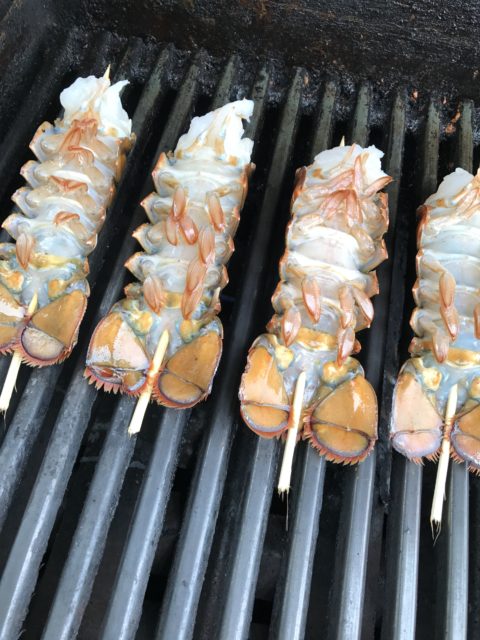 t, cut the shell from the meaty end to the last segment of the tail and pull apart slightly. This will allow the butter to get to the meat while basting. Put the tails, shell side down, on the grill at medium heat. Grill for 7-8 minutes with the lid down. Flip the tails over and baste generously being sure to work the butter mixture into the opened shell. Continue cooking with the lid down for another 5 minutes. Again, the meat will be firm, white and opaque. Baste once more before serving. Because the shells are already cut, it is easy to remove the meat by just pulling the shell apart and pushing the meat up through the shell.
t, cut the shell from the meaty end to the last segment of the tail and pull apart slightly. This will allow the butter to get to the meat while basting. Put the tails, shell side down, on the grill at medium heat. Grill for 7-8 minutes with the lid down. Flip the tails over and baste generously being sure to work the butter mixture into the opened shell. Continue cooking with the lid down for another 5 minutes. Again, the meat will be firm, white and opaque. Baste once more before serving. Because the shells are already cut, it is easy to remove the meat by just pulling the shell apart and pushing the meat up through the shell.
Serve lobster with extra melted butter for dipping and lemon wedges. Once you discover how simple it is to cook lobster yourself, and how much money you will save, you will eat like royalty more often. Oh, and speaking of that, here is one more lobster fact: lobster was once considered a pauper’s meal because it was so readily available. Now we pay $36 for a couple of tails at a restaurant, or not.
Vinaigrette dressings are super simple to prepare. The basic ingredients include oil, spices, herbs and/or other flavoring (mustard, jelly or jam, honey, etc.), and vinegar at the ratio of about 1 part vinegar to 3 parts oil. You don’t even need to have fancy vinegar or oil, apple cider vinegar and vegetable oil will work.
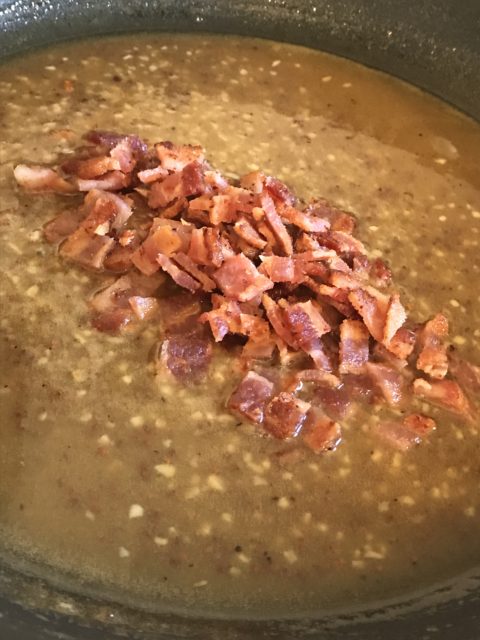 What makes this vinaigrette amazing?? The oil used is bacon renderings. Yes, bacon grease…yum! This dressing is best served warm. Store it in a microwavable container so it can be microwaved for 20 – 30 seconds just before serving.
What makes this vinaigrette amazing?? The oil used is bacon renderings. Yes, bacon grease…yum! This dressing is best served warm. Store it in a microwavable container so it can be microwaved for 20 – 30 seconds just before serving.
It is a great dressing for a spinach salad or for a wilted leaf lettuce salad. I have a garden full of red leaf lettuce, so that’s what I used for this salad. I tossed on some strawberry slices and feta cheese. Fresh mushrooms and red onion slices would have been tasty too. For a spinach salad, the mushrooms, red onions, hard boiled egg slices, sliced almonds, and bleu cheese in place of the feta would be tasty.
- 3-5 Bacon slices (cooked crisp and crumbled)
- Bacon drippings
- ¼ C Apple Cider Vinegar
- 3 T Stone Ground Mustard (I used a sweet & spicy mustard)
- 2 T Honey
- 2-3 t Minced Garlic
- ½ t salt
- ½ t pepper
- Fry bacon, remove from renderings and crumble
- Reserve bacon renderings in the pan
- Add the mustard, honey, garlic, salt and pepper
- Whisk over low heat
- Add the vinegar and continue whisking while the dressing thickens
- Add crumbled bacon
- Pour into a resealable microwave safe container
- Microwave without the lid for 20-30 seconds if needed before serving
Have I mentioned I LOVE grilling season! Honestly, I could grill every day if I didn’t live where more than half the year it is either freezing or raining. Yes, I could still drag the grill out. It’s just not as fun to stand outside shivering and wet while cooking.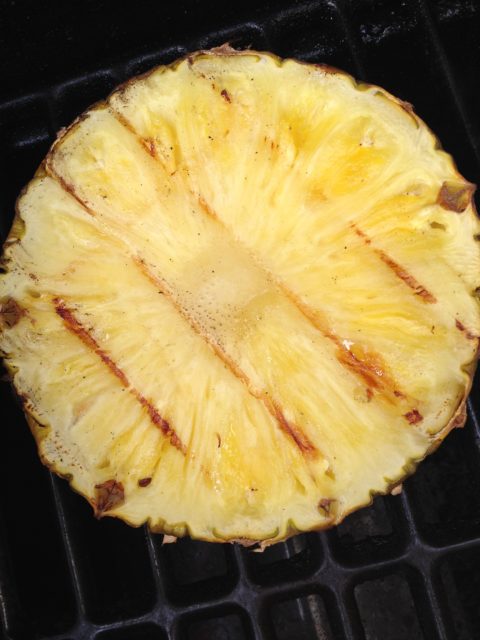
One of my favorite seasoning blends for grilling is jerk seasoning. It is perfect for chicken and pork. You can order Changing Seasonings Island Spice from the online market page, or make your own using the recipe below. Jerk is spicy with the unique flavor of Allspice. I typically grill fruit such as pineapple or peaches with the meat, and then serve over brown rice or quinoa.
Allspice comes from tropical Central America and West Indies. Like Cloves, Allspice has a very unique, pungent flavor. It is used in cooking all around the world from the Caribbean to Europe to the Middle East. It compliments meats, vegetables (especially squash and root vegetables, and fruits). It is even used in baking cakes, pies and other deserts.
If you have read other posts, you know that I actually prefer chicken thighs. They are more juicy and flavorful. It just happens that I had breasts to use when I wrote this. Tenders or even drumsticks would work well too. Use your favorite.
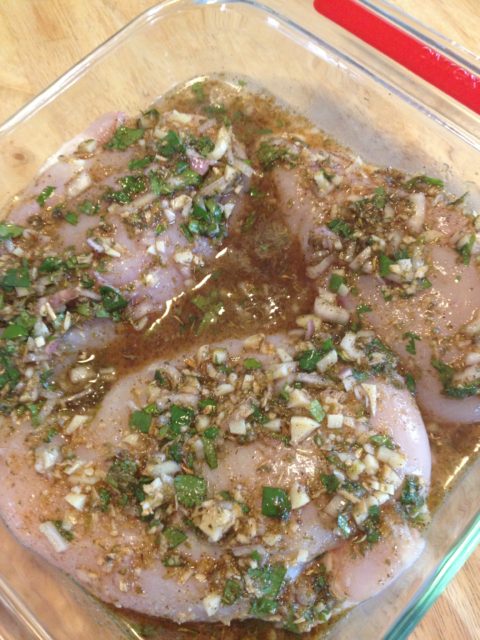 Combine the ingredients to make a marinade. Meat doesn’t have to marinate very long, 1 – 4 hours is plenty. In fact, many cuts of meat will actually lose texture and become grainy if left in the marinade too long. Do not use the excess marinade to baste the meat unless it will be cooked fully. Reserve some of the marinade before putting the raw meat in it for that purpose, just to be safe.
Combine the ingredients to make a marinade. Meat doesn’t have to marinate very long, 1 – 4 hours is plenty. In fact, many cuts of meat will actually lose texture and become grainy if left in the marinade too long. Do not use the excess marinade to baste the meat unless it will be cooked fully. Reserve some of the marinade before putting the raw meat in it for that purpose, just to be safe.
This marinade is great for pork and shrimp too. Season with additional jerk seasoning and garnish with grilled fruit before serving.
Caribbean Jerk Chicken
3-4 Boneless, Skinless Chicken Breasts, halved (or your favorite chicken pieces)
1 Medium Lemon, juiced + 2 T zest
1 Lime, juiced + 1 T zest
3 T Olive Oil
1/2 C Coconut Rum (optional – plain light Rum or Tequila could also be used)
2 T Shallot, minced (about 1/2 large shallot)
2 large Cloves Garlic, minced
2 T Jerk Spice mixture*
Mix the lemon juice (about 3 T), lime juice (about 2 T), zest and olive oil. Add the jerk spice, minced shallot and garlic. Whisk in the rum. Pour over the chicken and refrigerate for at least an hour.
*Jerk Spice Mix
1 T dried minced garlic
3 t cayenne pepper
2 t onion flakes
2 t dried thyme
2 t dried parsley
2 t dark brown sugar
2 t kosher salt
1 t paprika
1 t ground allspice
1 t coarse ground peppercorns
1/2 t dried crushed red pepper flakes
1/2 t fresh ground nutmeg
1/4 t ground cinnamon
Mix the ingredients and store in an air tight container away from heat and light for 6 months.
- 3-4 Boneless, Skinless Chicken Breasts, halved
- 1 Medium Lemon, juiced + 2 T zest
- 1 Lime, juiced + 1 T zest
- 3 T Olive Oil
- ½ C Coconut Rum (plain light Rum or Tequila could also be used)
- 2 T Shallot, minced (about ½ large shallot)
- 2 large Cloves Garlic, minced
- 2 T Jerk Spice mixture*
- Mix the lemon juice (about 3 T), lime juice (about 2 T), zest and olive oil.
- Add the jerk spice, minced shallot and garlic.
- Whisk in the rum.
- Pour over the chicken and refrigerate for at least an hour.
- Grill chicken until required doneness.
I have been craving a Chicken Gyro. Although, I am not sure if I am really just craving the Changing Seasonings Greek Isle seasoning blend I use, or perhaps the fresh Tzatziki sauce. Probably both.
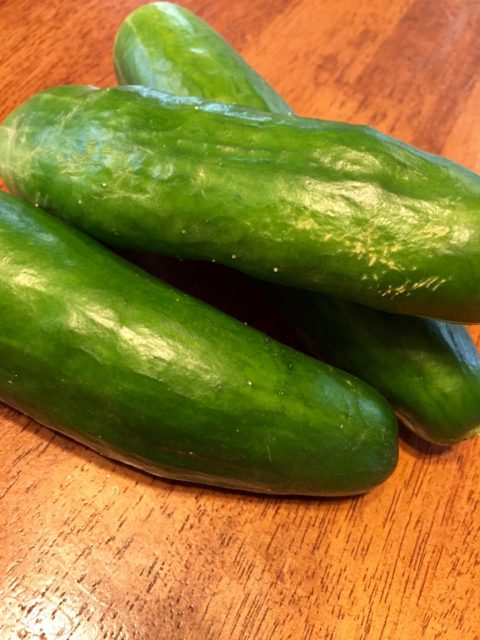 I ate a ton of Greek last summer, but took a little break once my garden stopped giving me cucumbers. This spring, I planted two cucumber plants in my little garden. One, was a plant that was withered at the greenhouse so the owner just tossed it in for free to see if I could salvage the poor little thing. Both plants are growing like crazy though, in what is best described as an attempt to take over the world. I don’t even think I will get a good harvest of green beans before the cucumber plants sprawl out with their tiny but strong little tentacles that grab onto whatever they can and take over an entire corner of my garden. I have a ton of blossoms, and in turn, will have bunches of cucumbers again this year.
I ate a ton of Greek last summer, but took a little break once my garden stopped giving me cucumbers. This spring, I planted two cucumber plants in my little garden. One, was a plant that was withered at the greenhouse so the owner just tossed it in for free to see if I could salvage the poor little thing. Both plants are growing like crazy though, in what is best described as an attempt to take over the world. I don’t even think I will get a good harvest of green beans before the cucumber plants sprawl out with their tiny but strong little tentacles that grab onto whatever they can and take over an entire corner of my garden. I have a ton of blossoms, and in turn, will have bunches of cucumbers again this year.
Tzatziki is a Greek sauce that is used to top meats, on gyros, and as a dip. A local to me restaurant uses it as a dip for a tasty little potato wedge appetizer. The wedges are coated in a Bay Seasoning, like Changing Seasonings Calypso blend. The two compliment each other perfectly. Let’s just say, the ratio of Tzatziki to wedge is not balanced when I am eating this appetizer. The wedges become more of a utensil to scoop the dip into my mouth.
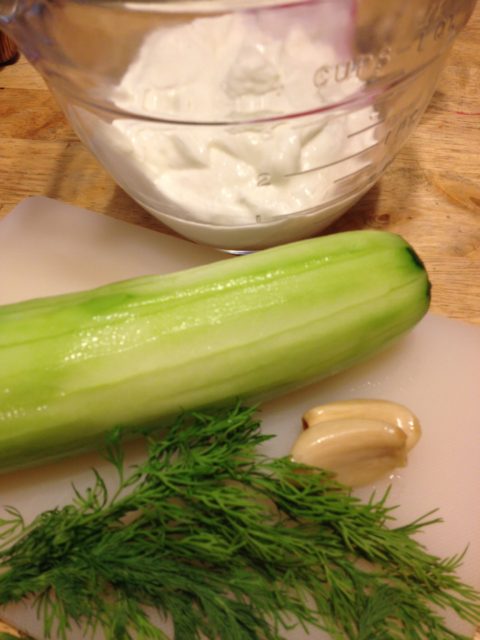 Tzatziki is pretty simple to prepare. There are a few different variations out there, but the basic ingredients are the same: Greek yogurt, cucumber, lemon juice, garlic, olive oil and dill. Some people shred the cucumber and some chop it. Either is acceptable. Some also blend or use a food processor to mix the Tzatziki to a smooth sauce or dressing consistency. I prepare it differently based on what I am going to use it for, but I think shredding the cucumber is my general go-to way.
Tzatziki is pretty simple to prepare. There are a few different variations out there, but the basic ingredients are the same: Greek yogurt, cucumber, lemon juice, garlic, olive oil and dill. Some people shred the cucumber and some chop it. Either is acceptable. Some also blend or use a food processor to mix the Tzatziki to a smooth sauce or dressing consistency. I prepare it differently based on what I am going to use it for, but I think shredding the cucumber is my general go-to way.
This is a good place for a reminder of the rule of thumb when trying to decide how much of a dry spice to use in place of fresh herbs. The typical equation is three times the amount of fresh than dry. Dried spices are more potent than fresh. Since a tablespoon is the equivalent of 3 teaspoons, if the recipe calls for 1 tablespoon of fresh dill, in this case, then you could substitute with 1 teaspoon dried dill weed.
Also, remember that there is a difference in dill weed and dill seed, and they are not interchangeable in this recipe. Dill weed is the fresh leaves of the plant. Often used in Mediterranean dishes, dill weed compliments carrots, cucumber, eggs, fish and seafood, basil, garlic, mustard and parsley. Dill weed is more flavorful fresh or frozen, not as much when dried. If used in cooking, add the dill weed at the end of cooking so it doesn’t lose potency. Dill seed is used mostly is slow cooked foods and compliments cabbage, onions, potatoes, cumin, garlic, and ginger. Both are used in pickling.
Most recently, I have topped both Chicken Gyros and Shrimp Gyros with Tzatziki. Just season the chicken or shrimp with Greek spice before cooking (both are great on the grill!). Put on pita bread with thin sliced sweet onion, feta cheese, thin sliced tomato, thin sliced cucumber (optional), and Tzatziki. Top with pitted kalamata olives. Yum!
- 16 oz Plain Greek Yogurt
- 2 medium Cucumbers - peeled, seeded and chopped or shredded
- 2-3 cloves Garlic - minced
- ½ Lemon - juiced
- 2 T Olive Oil
- Dill Weed - fresh or dry (use 1 T fresh or 1 t dry)
- Salt - to taste
- Pepper - to taste
- Mix the ingredients
- Chill until serving
Whole chickens are inexpensive. I buy them when they are on sale for about $4 for a 3-5 pound chicken. Cooking chicken with the bone and skin will be tender and have the most flavor. The best part, cooking a whole chicken is simple, and they can look quite elegant when you serve them. I have written previously about preparing chicken “rotisserie” style on the grill in my Beer Butt Chicken post. But, the evening I wrote this, I was dodging thunderstorms so I decided to just roast the chicken in the oven.
This post isn’t so much about the flavors because you can use whatever sounds good. I’m doing my go-to favorite: Lemon Garlic Rosemary Roast Chicken. I am rubbing the chicken beneath and on top of the skin with a compound butter made by mixing softened butter with minced fresh garlic and chopped fresh rosemary. I squeezed the juice of a lemon over the chicken and stuffed the cavity with the lemon and sprigs of fresh rosemary. This post is more about the technique. Once you know how to roast a chicken, you can get creative. Some other ideas include lemon or orange, thyme, Cajun spices, paprika, and …
Okay, to roast a chicken you need to have some kind of a roasting pan. The higher the sides, the less splatter and the more brown the sides of the chicken will get. Many roasting pans come with a rack to elevate the meat, another reason you want the sides to be a bit higher. If you don’t have a rack, you can form one out of aluminum foil. I use a silicone roasting rack that can be used in any pan. By elevating the meat, it browns more evenly and doesn’t sit in the grease or juices that come off of the meat. A lid isn’t necessary. If the top of the roast is browning too quickly, lay a piece of foil over it. Foil can be your friend when roasting. I also line the roasting pan with it to make clean up easier.
It is good to have a meat thermometer so that you will know when the meat has reached the desired internal temperature. For chicken, 155-160 degrees. Remember that the meat will continue to cook in the ten minutes after you remove it from the oven and allow the juices to redistribute. A 3-5 pound chicken that is fully defrosted will take about 80-90 minutes at 425 degrees.
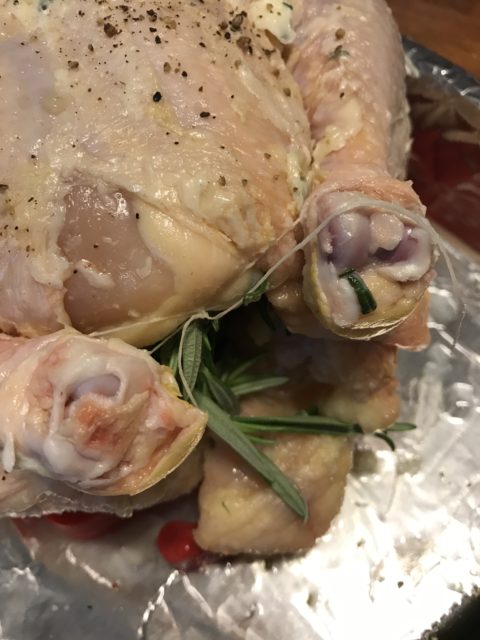 Preheat the oven to 425 degrees. Prepare the chicken by making sure the giblets are removed from the cavity, dry the skin so you can season it, and secure the wings and legs. You can tie them in technique called trussing by tucking the wings behind the back and securing with twine over the legs, around the back, and then down around the feet. Or, you can simply cut little pockets to tuck the wings in to and tie the feet together. If you do not have twine, you can use dental floss. Just don’t use mint flavored unless it compliments the seasonings you are using, haha!
Preheat the oven to 425 degrees. Prepare the chicken by making sure the giblets are removed from the cavity, dry the skin so you can season it, and secure the wings and legs. You can tie them in technique called trussing by tucking the wings behind the back and securing with twine over the legs, around the back, and then down around the feet. Or, you can simply cut little pockets to tuck the wings in to and tie the feet together. If you do not have twine, you can use dental floss. Just don’t use mint flavored unless it compliments the seasonings you are using, haha!
Now, here is a part of the process that can be a bit controversial. Breast up or breast down?? I say breast up for the first 20-30 minutes to crisp the skin and seal in the juices. Then, flip the chicken over for the remaining cooking time to keep the breast meat tender as the juices flow downward. Pour a half cup or so of liquid in the bottom of the pan. Water, juice, wine or a combination will work. Add more if needed as the liquid evaporates. The juices from the meat will mix with the liquid and can be used to baste the chicken periodically.
That’s it! Other than the initial flipping of the bird, and the periodic basting and watching for over-browning of the skin, the chicken becomes a beautiful, juicy, flavorful meal practically on its own. If you want to get really fancy, toss some cut up vegetables such a carrots, onions, and potatoes in the bottom of the pan for the last 30-40 minutes of the cooking and you have a pretty  side dish. Simple.
side dish. Simple.
Click here for your chance to WIN a FREE Silicone Roasting Rack. You must be 18+ to enter, live in the 50 United States or District of Columbia, and answer a poll question (hint: it’s about this post). The winner will be randomly selected after July 2, 2017. The prize will be shipped directly to the winner from Amazon, and the winner must have an Amazon.com account. No purchase necessary to be entered or win.
I am always looking for new ways to incorporate bacon into recipes. I wanted to come up with a unique and fun recipe. I think this one is that and more! These chewy cookies have the perfect blend of sweet and salty.
They are also super simple and take about 20 minutes from start to finish (well, if you already have the bacon cooked). I planned ahead and reserved a few slices of bacon from what I prepared for breakfast.
If you have never had Potato Chip Cookies, you are missing out! Adding the bacon is just a bonus. I recommend that you use your favorite brand of ruffled or wavy chips.
I guarantee that you will crave these after trying them. If you bake cookies for a bake sale, class party, or holiday cookie swap, add these to your repertoire and you will have a unique cookie that people will LOVE. There is BACON in them for goodness sake!
Bacon Potato Chip Cookies
- 1 C Butter Flavored Shortening
- 1 C Granulated Sugar
- 1 C Light Brown Sugar (packed)
- 2 Large Eggs
- 1 t Vanilla
- 2½ C All-purpose Flour
- 1 t Baking Soda
- 1 t Salt
- 2 C Potato Chips (crushed)
- ½ C Bacon (chopped) * about 4 slices
- Preheat oven to 350 degrees
- Cream together shortening and sugars
- Add eggs and vanilla
- Mix on low until creamy
- Mix together the flour, baking soda and salt
- Add dry mixture a little at a time until blended
- Add potato chips and bacon
- Shape into 1½ in balls
- Place on ungreased baking sheet (you can line with parchment paper or silicone sheet)
- Flatten slightly with a fork
- Bake for 10 minutes
- Allow to cool

